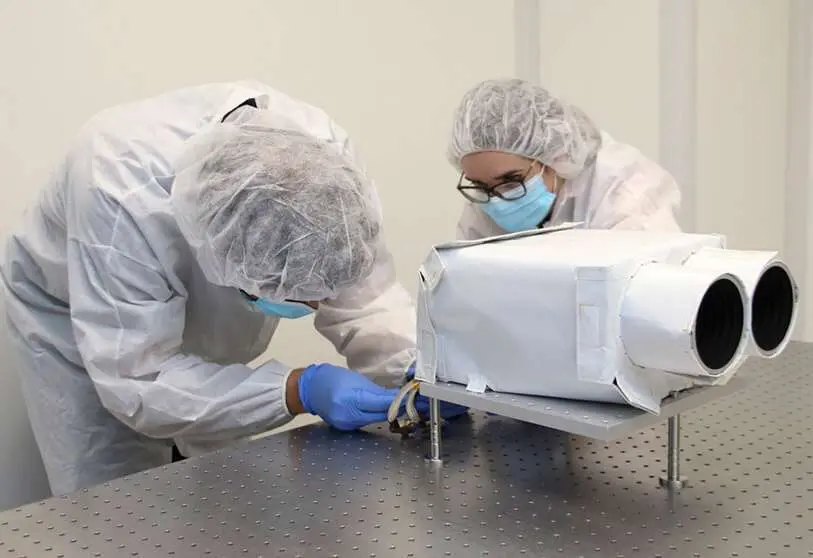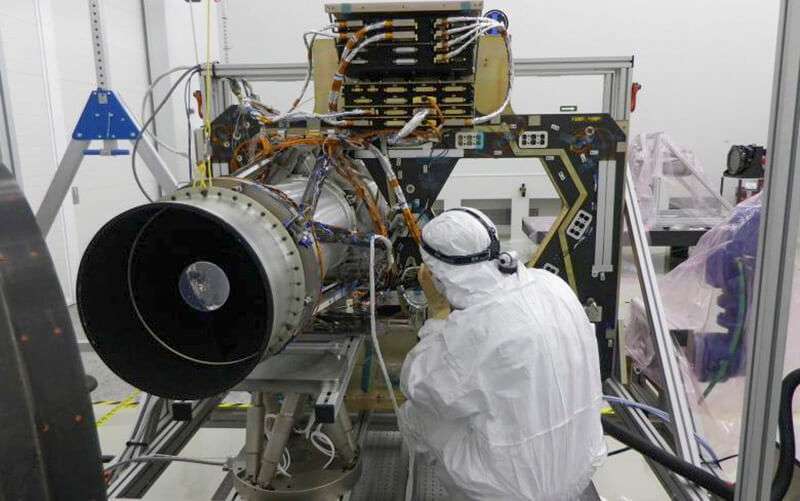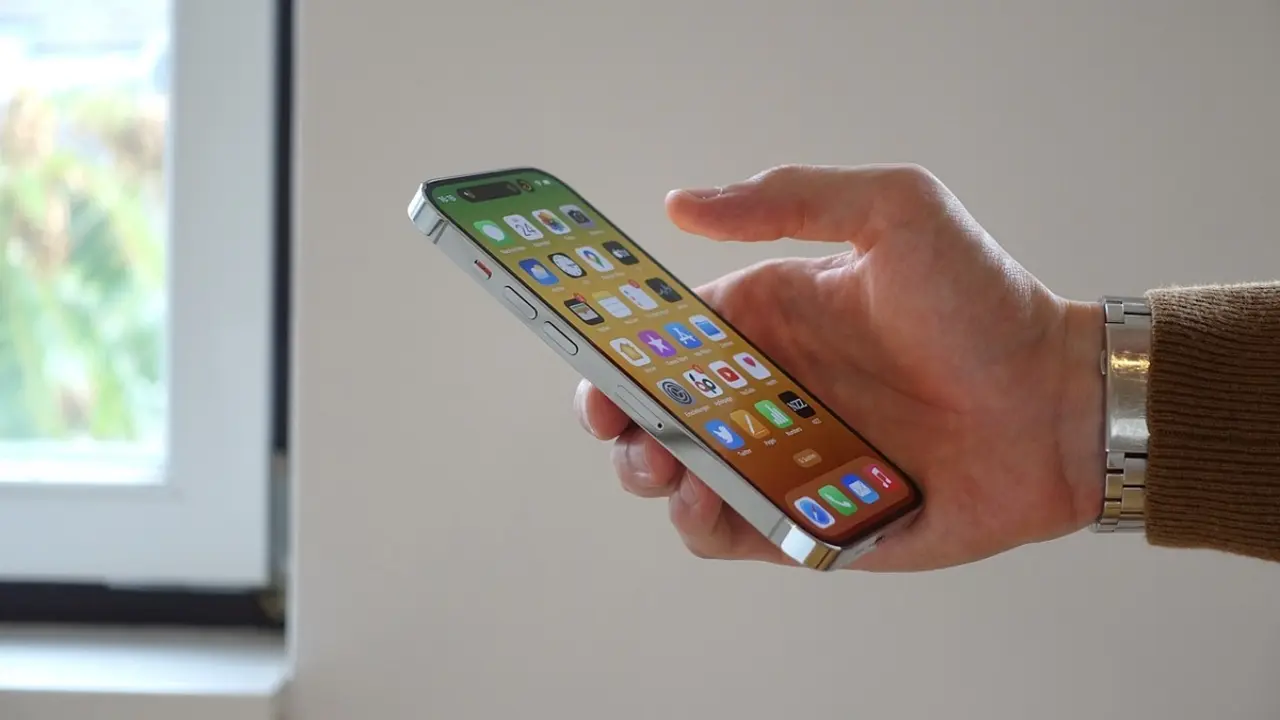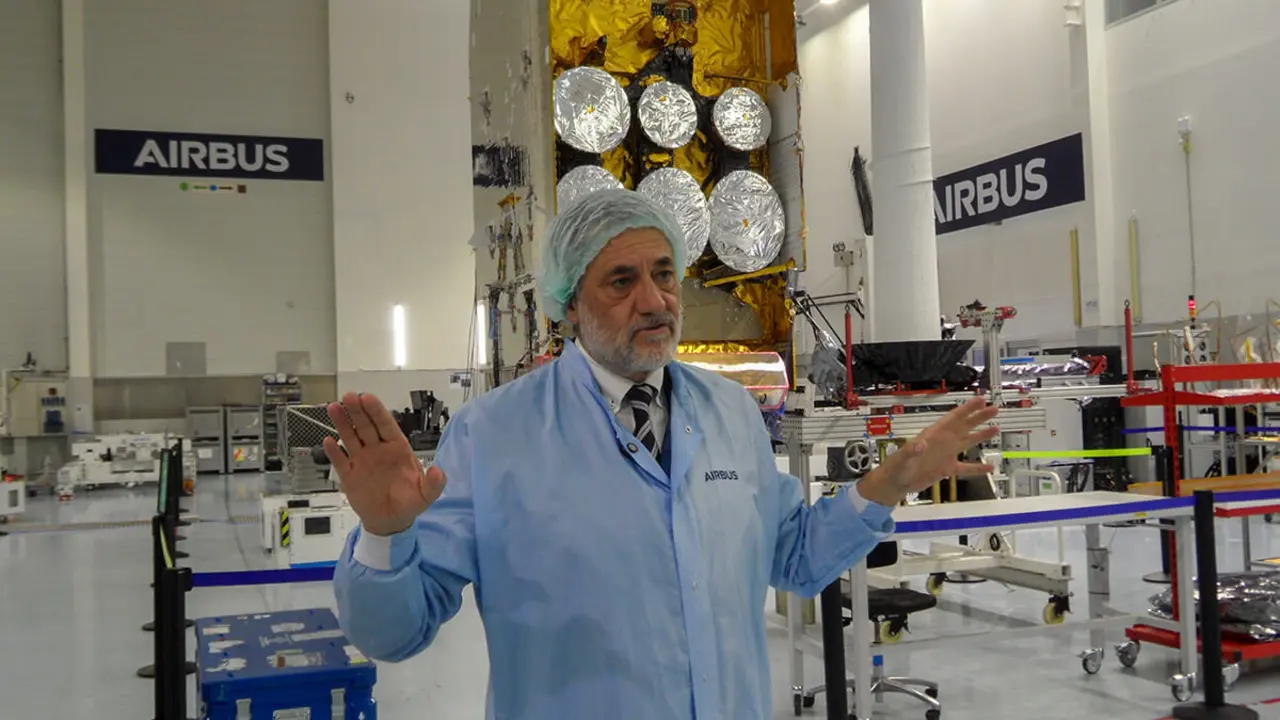The US Department of Defence evaluates a Spanish ultra-high-resolution micro telescope in space

It is only a week since a powerful Spanish camera of small dimensions and very high resolution has been on board the International Space Station (ISS), which flies over our heads at an altitude of 400 kilometres.
It is nothing like NASA's James Webb, not even in name, iSIM-90. But it is already on the great orbital complex, having been selected and funded by none other than the US Department of Defence.
The top brass responsible for technological innovation in the US Armed Forces want to assess for themselves the degree of quality and detail of the multispectral optical images of the Earth that the tiny Hispanic super-telescope can capture while moving at a speed of close to 30,000 km/h.

The micro camera has been conceived, developed and manufactured by Satlantis, a company founded in 2013. Its headquarters are located in the Science and Technology Park of Biscay in Leioa (Bilbao), inaugurated in February 2019 by the president of the Basque Autonomous Community, Iñigo Urkullu. Its engineers have patented iSIM technology - an acronym for integrated Standard Imager for Microsatellites - which can take 52 snapshots per second with an Ultra High Pixel (UHP) quality of 4,000 x 3,000 pixels, equivalent to 12 Megabits.
What is considered to be a ground-breaking micro space telescope is currently in the possession of the four NASA members housed in the large orbital complex. They are astronauts Kayla Barron, Raja Chari, Thomas Marshburn and Mark Vande Hei, who are awaiting orders from the Houston Control Centre in Texas to install the iSIM-90 on the outside of one of the ISS modules.

The delicate manoeuvre is scheduled for 8 January and will be carried out with the help of the Canadarm 2 robotic arm, one of two that facilitate the astronauts' work in moving and securing loads of all sizes to the outside of the space station.
If everything goes according to plan, iSIM-90 will enter service in mid-February and will remain "in operation for a year exposed to cosmic radiation, with the possibility of extending its operational life for another year", confirms Juan Tomás Hernani, CEO of Satlantis, in a telephone conversation with Atalayar. It will provide images of very precise areas of the Earth with "very high resolution in all spectral bands, including the short-wave infrared," he says.

At just under 20 x 20 x 40 centimetres in size, the super-small iSIM-90 telescope had to compete in 2019 with hundreds of other projects. All of them were seeking approval from a science committee chaired by the US Department of Defence to be tested on the ISS.
The success of Satlantis was based on the "extreme miniaturisation and very high resolution compared to many other options" of the Satlantis proposal, says Juan Tomás Hernani. This is what made the decision in favour of the Spanish company, which obtained the approval and funding from the US military through the University of Pittsburgh.
The tiny iSIM-90 camera flew into space on 21 December inside a Dragon automated cargo spacecraft from billionaire Elon Musk's SpaceX company, along with 2,989 kilograms of spare parts and other technological, biomedical and scientific tests. It lifted off on the CRS-24 mission from the Kennedy Space Center in Cape Canaveral, Florida, via a Falcon-9 launcher, also owned by SpaceX.

The test that iSIM-90 will have to pass on board the ISS is part of the Space Test Programme-Houston 7 platform. On behalf of the Pentagon, NASA will verify that the Spanish ultra-high resolution camera also performs in orbit as well as it does on the ground.
Special attention will be paid to the fact that the "disruptive imager achieves double or even almost triple the degree of sharpness that conventional optical solutions" extract from images captured from space. And it achieves a resolution of less than 1 metre in each spectral band.
Integrating numerous algorithms applied to the most advanced mechanics, optronics - a combination of optics and electronics - and even artificial intelligence, the Spanish project is listed in the cargo manifest as belonging to the CASPR project. It is a set of on-orbit demonstration experiments chosen by the National Science Foundation's Center for High Performance and Resilient Space Computing, in collaboration with the Universities of Pittsburgh and Florida.

Satlantis expects to use its iSIM family of cameras for space-based surveillance and monitoring of refineries, oil extraction plants, oil and gas pipelines and reservoirs, onshore and offshore wind turbines, power lines and nuclear power plants. It also aspires to be called upon to detect greenhouse gas emissions, pollutant spills on land and at sea, and many other critical or emergency situations. And if the Pentagon has shown interest, it will be to validate the use of the technology in satellites and spy aircraft.
Satlantis' first foray into space took place on 21 May 2020 with the Japan Aerospace Exploration Agency (JAXA). On that date, a Japanese H-2 launcher lifted off from Tanegashima Space Base and carried the iSIM-170 micro camera to the ISS, where it was placed outside the Japanese Kibo laboratory and operated from June until December 2020. The first non-Japanese miniaturised optical camera installed on Kibo, Satlantis received the Spain-Japan Council Foundation award in September this year.

The company's future plans have won the confidence of companies and public entities and it already has the support and funding of Enagas, Orza, Axis-Ico, the Vizcaya regional government and the Centre for the Development of Industrial Technology (CDTI) to tackle three new projects "some of which already have a specific date", Hernani emphasises.
The Basque company plans to put its first complete micro-satellite into orbit by June 2022. It has named it after Andrés de Urdaneta, the Augustinian monk who discovered and documented the so-called Tornaviaje, the maritime route across the Pacific Ocean that took advantage of the winds to sail from the Philippines to Acapulco, in Mexico. A little known explorer whose figure we want to highlight as he deserves, concludes Juan Tomás Hernani.









